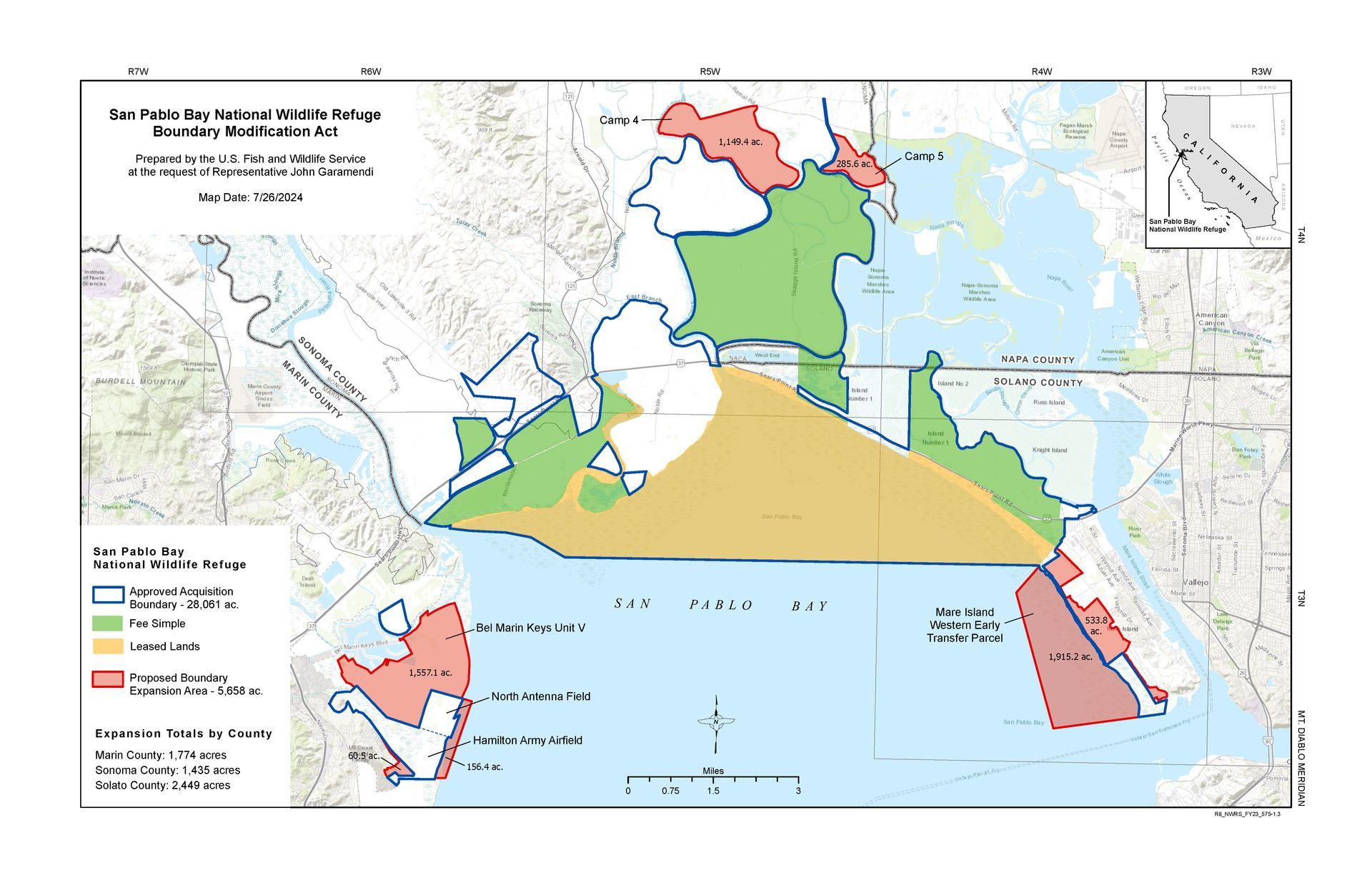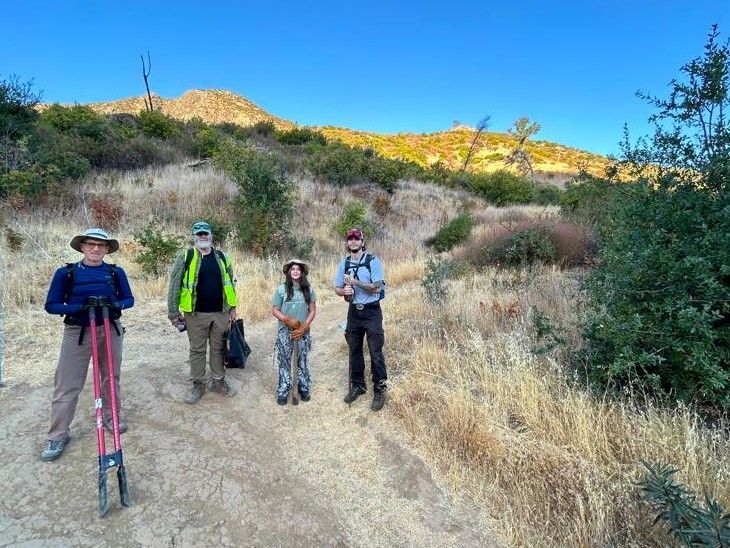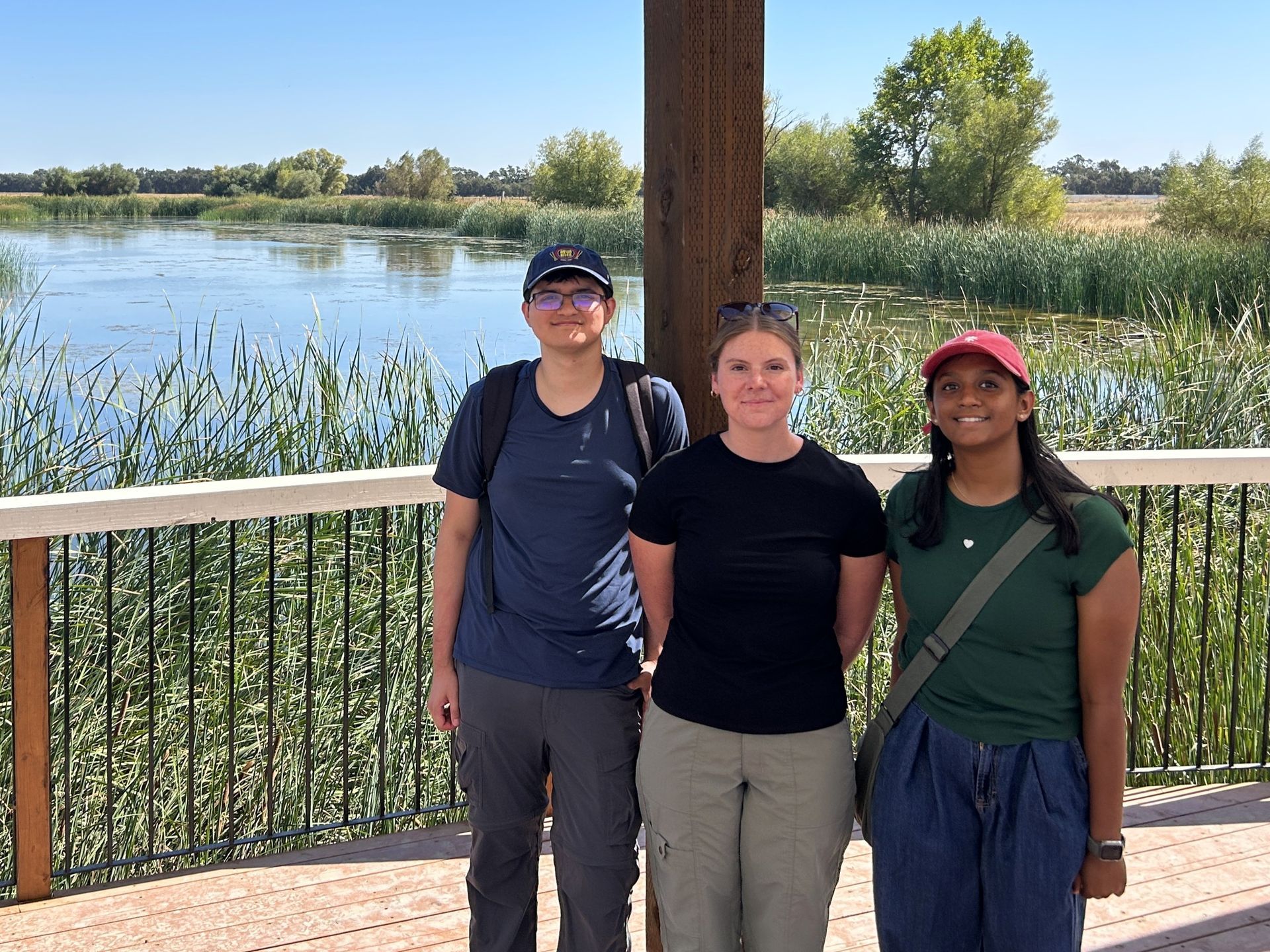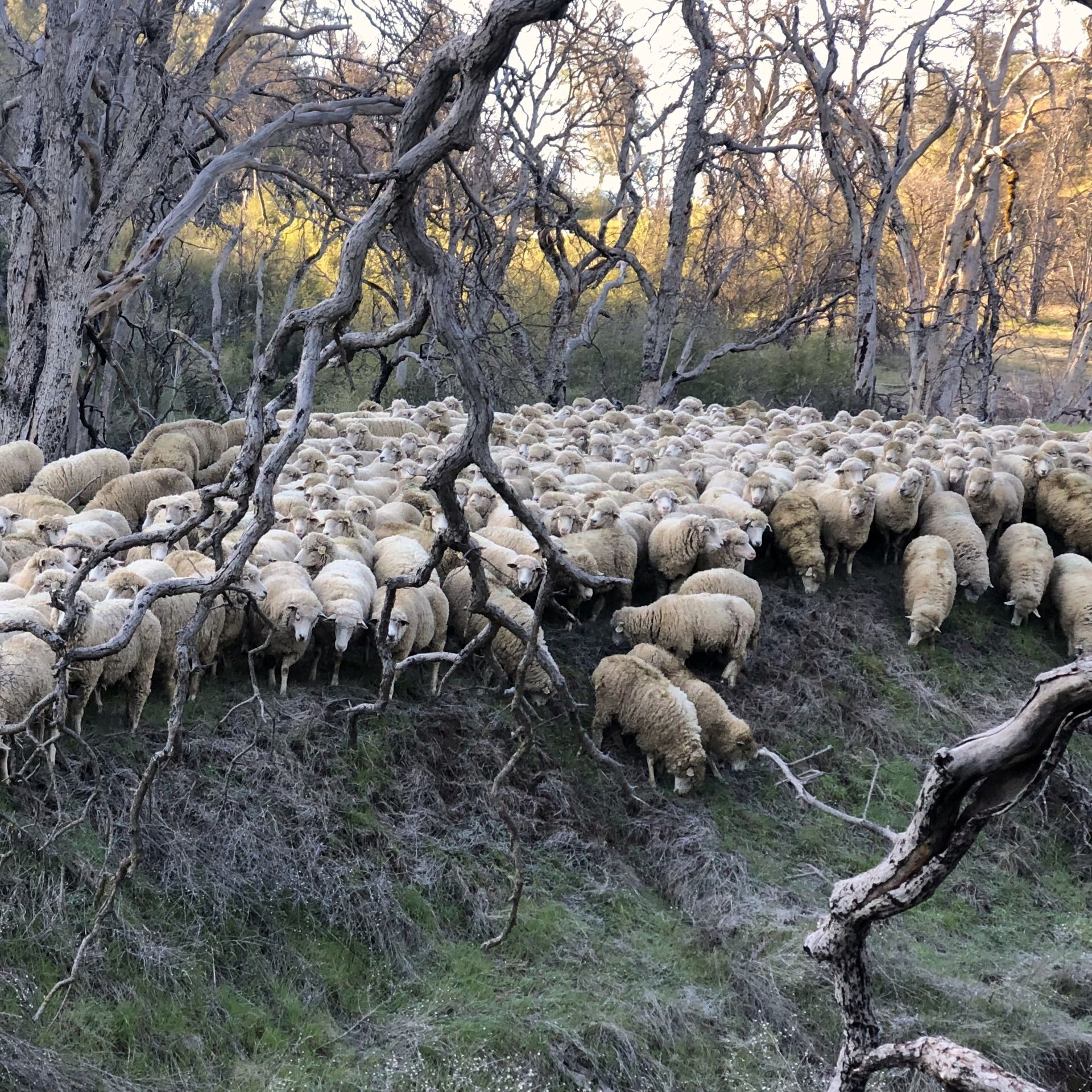SAN PABLO BAY NATIONAL WILDLIFE REFUGE EXPANSION ACT PETITION
Representative John Garamendi (D-CA08) released a discussion draft in September 2023 of the San Pablo Bay National Wildlife Refuge Expansion Act. The legislation is expected to be re-introduced in 2025. This proposed legislation would authorize the U.S. Fish and Wildlife Service (FWS) to expand the acquisition boundary of the San Pablo Bay National Wildlife Refuge by incorporating approximately 6,934 acres across six distinct parcels.
The proposed boundary modification includes:
- Camp 4: Sonoma Land Trust ownership
- Camp 5: Sonoma Land Trust ownership
- Bel Marin Keys Unit V: CA State Coastal Conservancy ownership
- Hamilton Army Airfield: CA State Coastal Conservancy ownership
- North Antenna Field: CA State Lands Commission ownership
- Mare Island Western Early Transfer Parcel: CA State Lands Commission ownership

The targeted parcels are currently owned by three California entities: the State Lands Commission, the State Coastal Conservancy, and the Sonoma Land Trust. All current owners are in support for the proposed legislation. Importantly, the Act establishes a framework for either direct federal acquisition or cooperative management agreements, providing flexibility for parcels that the state may need to retain ownership of, particularly submerged lands under State Lands Commission jurisdiction.
Supporting this legislation would advance critical wetland conservation in the San Francisco Bay Area. The expansion of the San Pablo Bay would increase public access to enjoy nature, wildlife observation, photography, hiking, and other recreational opportunities while protecting vital habitat for endangered species.
Please consider signing onto our support letter, which urges Representatives Garamendi, Huffman, and Thompson to move forward with introducing this important legislation.
Legislative Framework
Expanding the acquisition boundary is a preliminary step that enables the Fish and Wildlife Service to manage these areas, as FWS can only expand a National Wildlife Refuge within a pre-approved acquisition boundary. A critical provision in the Act prohibits the use of eminent domain or condemnation, ensuring that all land transfers must be voluntary and require consent from existing owners and FWS.
The legislation references the Land and Water Conservation Fund as a potential funding source for acquiring the parcels, with Congress expressing that the Secretary should prioritize using such funding for acquisition purposes from willing sellers.
Conservation Significance
The current San Pablo Bay National Wildlife Refuge encompasses 24,390 acres, primarily consisting of water and wetland habitats spanning Sonoma, Solano, and Napa Counties. The refuge provides essential habitat for migratory waterfowl and shorebirds, while supporting several threatened and endangered species including the California clapper rail, salt marsh harvest mouse, and San Pablo song sparrow.
Historical impacts from hydraulic mining, salt production, water diversions, and agricultural conversion have eliminated approximately 85% of the bay's original tidal marshes. This habitat loss has compromised the ecosystem's ability to manage stormwater and maintain water quality.
Restoration Context
Two of the parcels identified in the proposed Act are currently undergoing or require environmental remediation. The Army Corps of Engineers is leading restoration efforts at Bel Marin Keys Unit 5 and Hamilton Army Airfield in partnership with the California Coastal Commission. These projects include flood protection improvements for nearby communities.
The legislation anticipates a phased approach where parcels would transfer to FWS management only after restoration work is completed. This sequencing leverages the Army Corps' superior funding access and remediation expertise while ultimately placing long-term management under FWS, which has greater capacity for ongoing habitat stewardship.
Broader Conservation Strategy
Beyond this legislation, FWS is simultaneously pursuing administrative expansion of the refuge's acquisition boundary to include additional areas in north San Francisco Bay that demonstrate resilience to sea-level rise. The FWS Director approved a Land Protection Strategy in July 2024, authorizing development of a comprehensive Land Protection Plan with public input.
Both the legislative and administrative approaches support federal and state 30x30 conservation objectives, aiming to protect 30% of lands and waters by 2030.
For more information on how to participate in the public comment process, contact Tuleyome Policy Director
Bryan Pride.
RECENT NEWS






